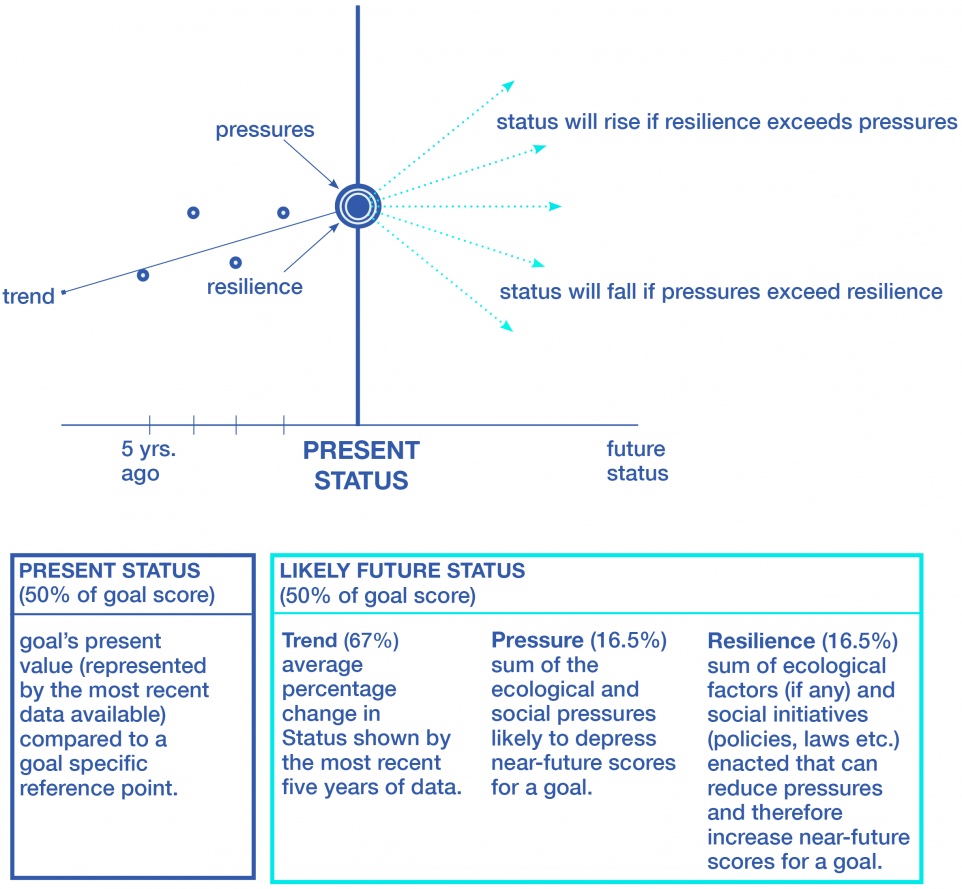Overview
The underlying philosophy behind the Index is that a healthy ocean sustainably delivers a range of benefits to people now and in the future.
For the global study, participating scientists, economists, and sociologists reviewed existing studies of what people want and expect from the ocean and then grouped them into ten categories called ‘goals.’
Each goal is scored on the delivery of specific benefits with respect to a sustainable target. A goal is given a score of 100 if its benefits are maximized without compromising the ocean’s ability to deliver those benefits in the future. Lower scores indicate that more benefits could be gained or that current methods are harming the delivery of future benefits.
The following provides a very brief overview of how we calculate Goal Scores, Country Index Scores, and Global Index Scores. For more information, take a look at the resources provided at the bottom of this page.
GOAL SCORES
Goal Scores are based on several components: current status, likely future status, trend, pressures, and resilience.
To calculate each Goal Score we average the Present Status and Likely Future Status:
CURRENT STATUS is a goal’s current value compared to its reference point, resulting in a score from 0 to 100.
LIKELY FUTURE STATUS is the predicted status score five years into the future (once again, on a scale from 0 to 100), which is estimated by adjusting the current status score by 3 variables:
- TREND which is the change in a goal’s status observed over the most recent five years.
- PRESSURES which are the ecological and social factors that decrease a goal’s status.
- RESILIENCE which are ecological factors and social initiatives (policies, laws, etc) that mitigate the pressures acting on a goal.

REGION INDEX SCORES
A region’s Index Score is the average of its goal scores. Goal scores are weighted equally in global assessments, but independent assessments could weight them differently depending on local conditions and values.
GLOBAL GOAL AND INDEX SCORES
The Global Score is the average of scores for all assessed regions weighted by EEZ area.
LEARN MORE
For more information about the theory and general calculations, it is worth looking at the original publication:
Download the paperYou can learn more about goal, pressure, and resilience components by selecting the options below.
The “Deep Dive” option will direct you to the complete OHI Global methods document where you can explore all aspects of the model and data we use to calculate the Global OHI scores.